Predictably, the initial pricing structure of the Disney Genie+ service at its launch in October 2021 ($15 per person per day at Walt Disney World and $20 per person per day at Disneyland) didn’t last long.
In October 2022 – with the holidays approaching – Disney officially swapped Genie+ to “dynamic pricing” – in other words, making Genie+ more expensive on days when it was more in-demand. Compared to high-price, high-utility services like Universal Express, the price of Genie+ remained relatively small – $15 to $39 per person per day. But frankly, so was Genie+’s usefulness. (Remember, they’d already updated language to suggest that “on average, guests can enter 2 to 3 attractions or experiences per day using the Lightning Lane entrance if the first selection is made early in the day,” and only through fairly high-pressure app-based effort.)
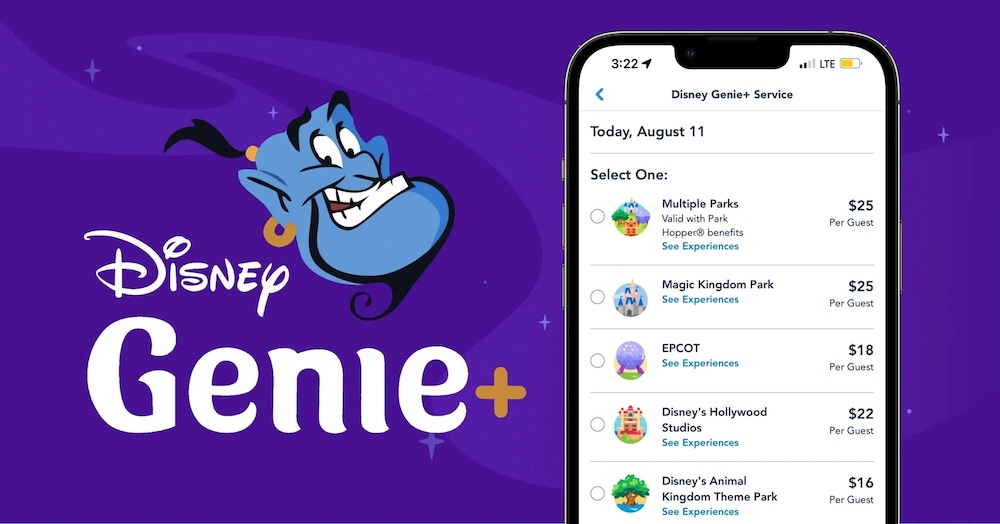
In June 2023, Walt Disney World also added dynamic pricing based on the theme park guests planned to use Genie+ in. (That was a somewhat sensible evolution given, again, that the service’s utility was relatively small in parks with low ride counts.) Naturally, that also monetized the ability to use Genie+ across multiple parks as an extra-cost add-on to your extra-cost add-on. But even by then, it was clear that guest sentiment toward Genie+ was strongly negative… and unlikely to change anytime soon.
In May 2023 – just 18 months after the launch of the Disney Genie+ service – Disney conceded that change was needed. In an uncharacteristically frank post on the Disney Parks Blog, the company laid out a list of post-pandemic policy reversals and pricing corrections they expected to roll out in 2024 – things like eliminating the frustrating park reservation system for most guests, returning the Disney Dining Plan, reversing the asinine decision to charge guests for Hotel parking, and the novel “Disney Bubble”-born idea of providing free admission to Disney Water Parks for hotel guests on their check-in day.
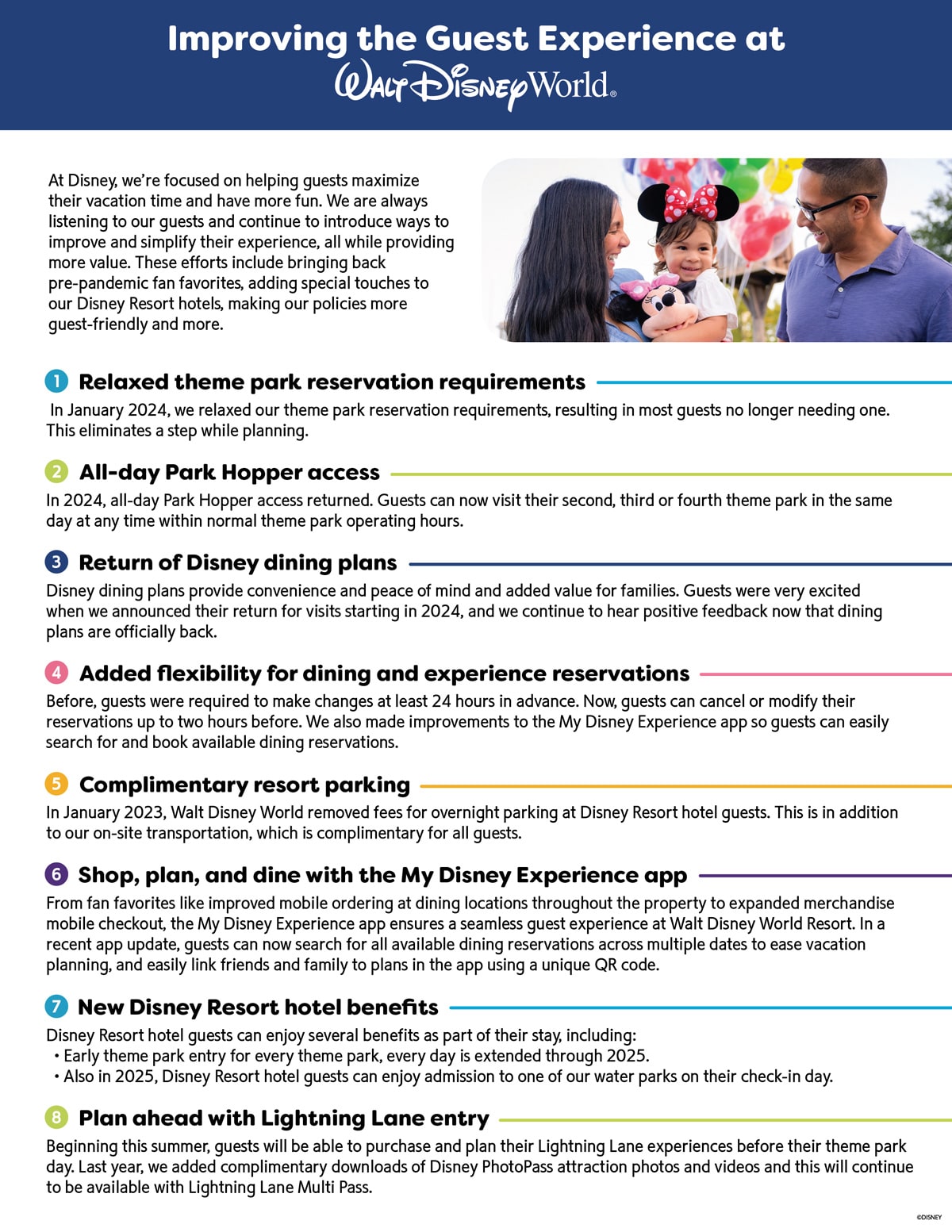
But most interesting for many was the insinuation that:
“We have heard from guests that they would like ways to plan with Disney Genie+ service and individual Lightning Lane selections before the day of their park visit, and we want you to know we are working on ways guests may do this for visits in 2024. Our goal is to give you the opportunity to spend less time planning in the park and more time enjoying your visit with friends and family. While we are not yet able to share specific details, we look forward to sharing more information at a later date.”
That later date arrived 13 months later – on June 25, 2024.
A Short Eulogy for Genie+
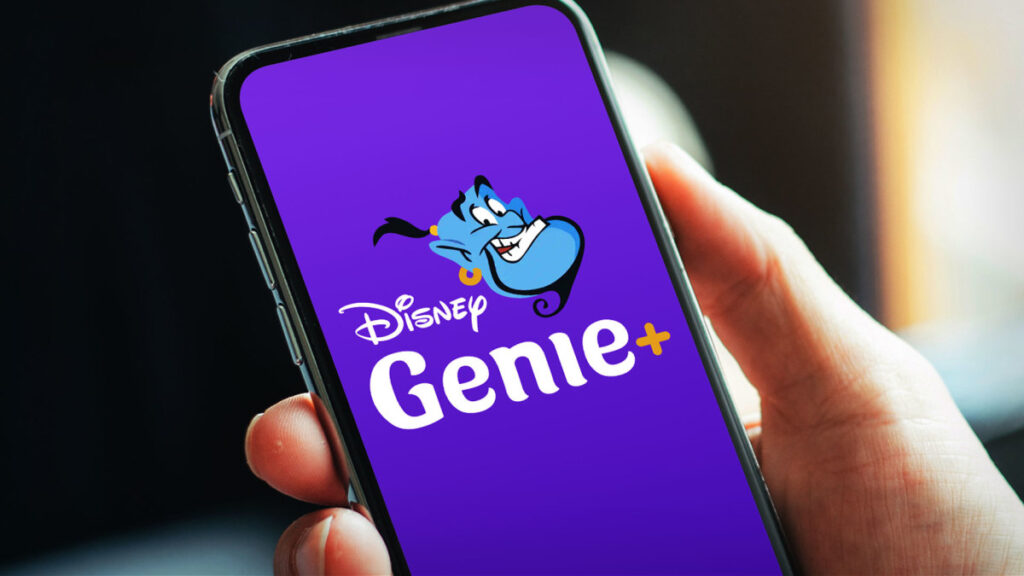
On paper, you can see how Genie+’s paid-for, app-based gamification of FastPass+ had sought to restore day-of decision-making and spontaneity to a day at Disney Parks. Even if it had succeeded in some regards, it was clear that the system was hostile (as evidenced by its need for 6:55 wake-ups), overcomplex (given the many ways a well-meaning guest could get it “wrong” and thus find they’d wasted their money), and, of course, pure capitalistic evil (by way of requiring payment at all, much less requiring a separate purchase for the best rides that used to be included in the free FastPass system).
Let’s face it: no one but Bob Chapek, Bob Iger, and Josh D’Amaro would ever love a system that – at its theoretical best – merely recreated the formerly-free service of FastPass, but for a fee. And guests’ hatred of Genie+ is warranted. Lest we forget, Genie+ (and any paid line-skipping system at Disney Parks) instantly means that guests must pay extra to recreate the formerly standard experience, ipso facto, you get an actively worse experience than the old default if you don’t pay for the add-on.
Even in the infinite vastness of the multiverse, there is no reality in which Disney Parks aficionados sing the praises of Genie+ or any variant that costs money where FastPass did not. But Genie+ was particularly brutal in the confusion, anger, and frustration it earned.
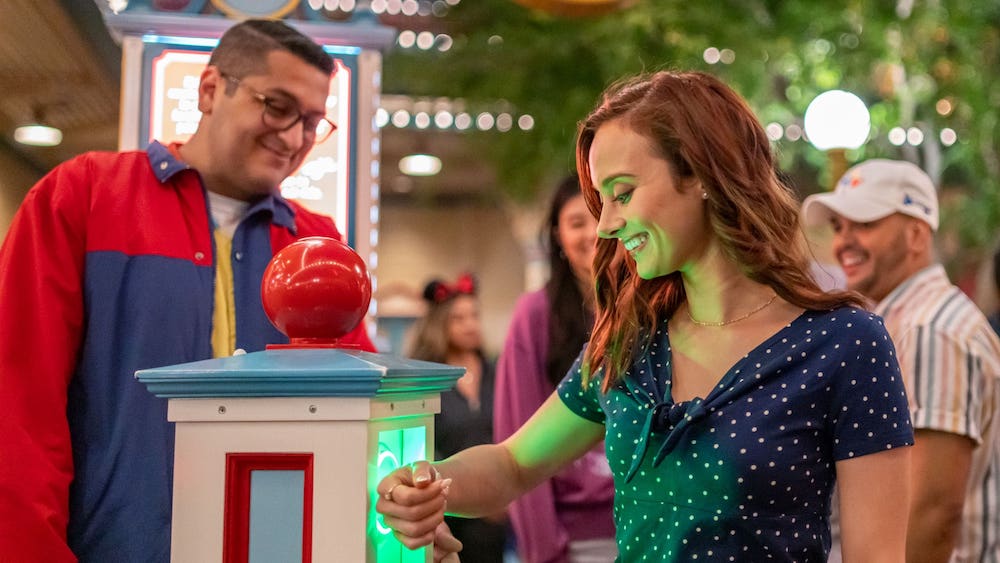
Consider its branding alone. What about Disney Genie Plus was Disney Genie (the free, app-based, totally inept itinerary planner), plussed? Nothing of course. And who would intuitively understand that to access Lightning Lanes, you’d need to purchase Genie+ – two brand terms with zero intuitive connection? From there, why would a casual visitor understand that Individual Lightning Lanes aren’t lower-cost, one-off access entries to Genie+ rides, but actually premium-priced, a la carte access to a separate tier of rides altogether…?!
On June 25, 2024, Disney finally got around to announcing those changes they’d promised for 2024. It was official. Genie+’s tombstone would read:
October 19, 2021 – July 24, 2024
Lightning Lane Passes
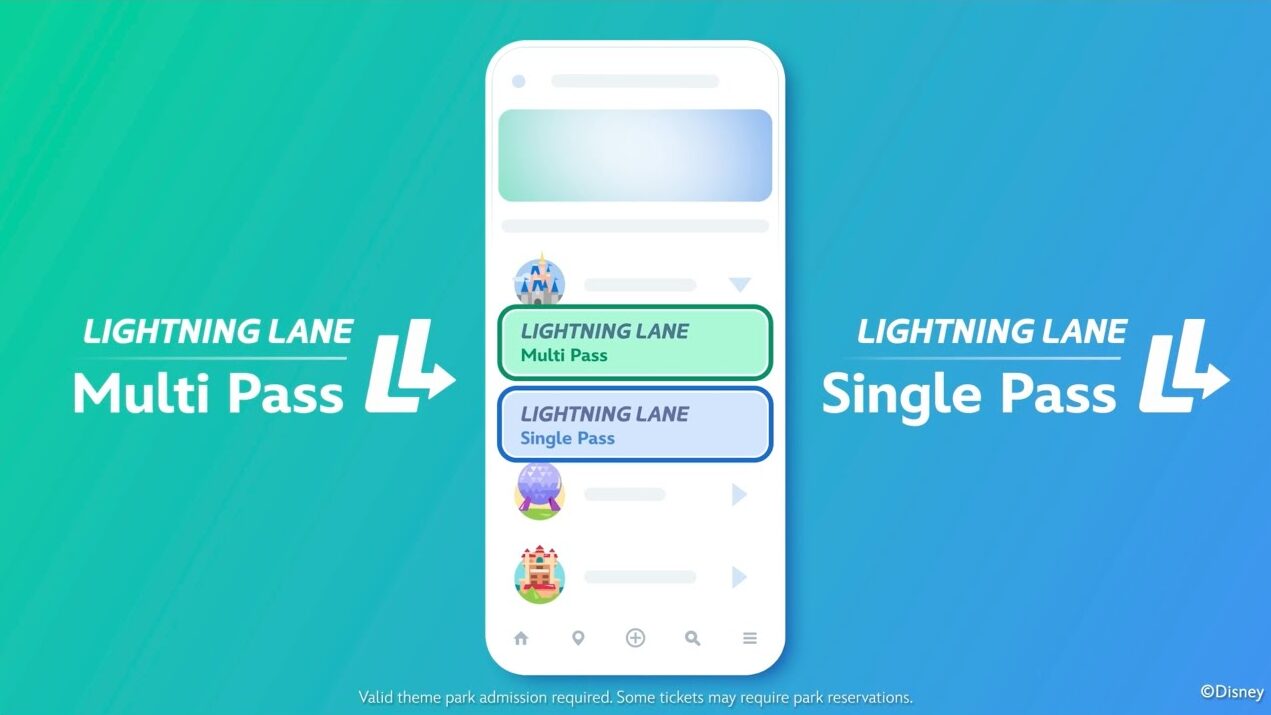
Swapping Genie+’s purple-and-gold for calm, estuarial blend of blue and green, Disney’s official update to their virtual queuing system was revealed as… Lightning Lane. Okay, okay, so technically, the parks’ FastPass queues had been re-labeled as Lightning Lanes since October 2021. But now, rather than nesting access to those Lightning Lanes under the discordant “Genie+” umbrella service (whose only useful feature was Lightning Lane access anyway), the product would be elevated to take center stage.
There’s a clear analogous relationship between what was and what is. Rides that had been a part of “Genie+” (with its bundled, return-window, app-based access to most Lightning Lanes) became accessible via Lightning Lane Multi Pass, whereas Individual Lightning Lanes (the premium, per-ride paid access to each park’s one or two newest starring rides) would be renamed Lightning Lane Single Pass.
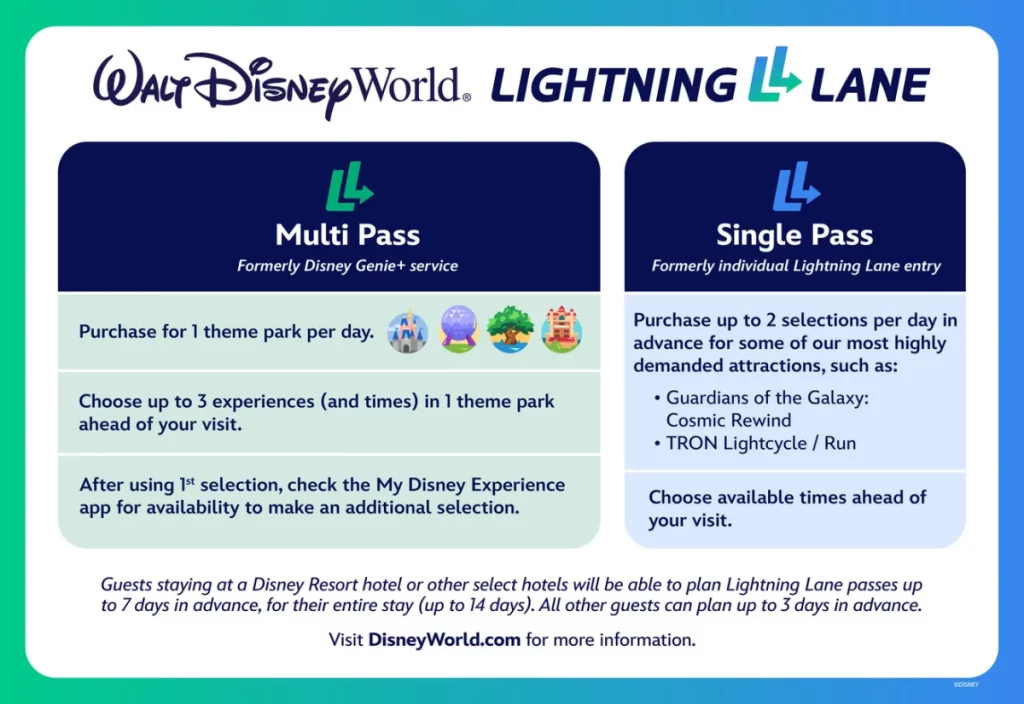
As ever, we can argue whether or not that’s really a clear, useful, and intuitive distinction… Wouldn’t you – as a guest – think that a “Multi Pass” includes all Lightning Lanes and allows you to enter each Lightning Lane multiple times (neither of which is true), or that a “Single Pass” is either a lower-cost, a la carte choice of any Lightning Lane or a pass that allows you to ride each Lightning Lane a single time (neither of which is true)?
In any case, the big change with the new “Lightning Lane Pass” product isn’t about branding or attraction access (which remains stratified in the same way Genie+ and Individual Lightning Lanes were). Neither is the fact that you need to pay to access the system (with Genie+-style dynamic date and park pricing), or how you book them (via the My Disney Experience app). The difference is when.
The new Lightning Lane Multi Pass option allows guests to pre-book up to three Lightning Lane attraction return times before they even set foot on Walt Disney World property (and likewise, to book Single Pass experiences ahead of time, too). Sound familiar? Yep, time is a flat circle, and has yielded a return to FastPass+ – the app-based, digital, pre-planning version of FastPass that ruled Walt Disney World from 2012 to 2020 (now, of course, simply requiring payment).
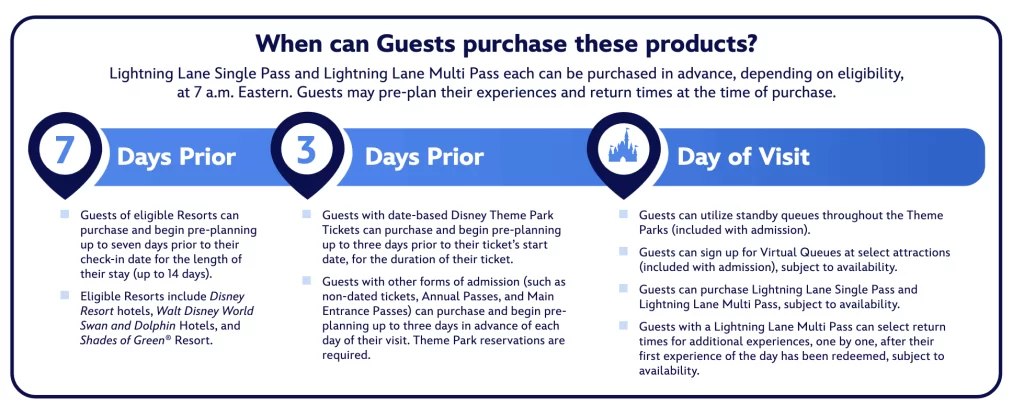
FastPass+ had a lot of perks (like the certainty and ease of knowing you’d secured the rides you wanted before your trip even began) and a lot of drawbacks (like the absurd idea that you should “lock in” your day down to the minute up to 60 days before your trip). The new Lightning Lane Pass splits the difference.
For one, it restores a perk to those who pay the exorbitant prices of Disney’s on-site hotels (who, in the Genie+ days, got practically no perks and had to wake up at 7 AM and “battle the riff-raff” for Lightning Lane spots each morning). Now, guests with a linked hotel reservation need only one 7 AM alarm: seven days out from their first park day, when they can make Lightning Lane selections and purchase the pass for every day of their visit in one transaction. Guests without a hotel reservation can still make Lightning Lane selections and then purchase the Pass before their day in the park, but beginning three days out from their first park day, for up to the length of their ticket.
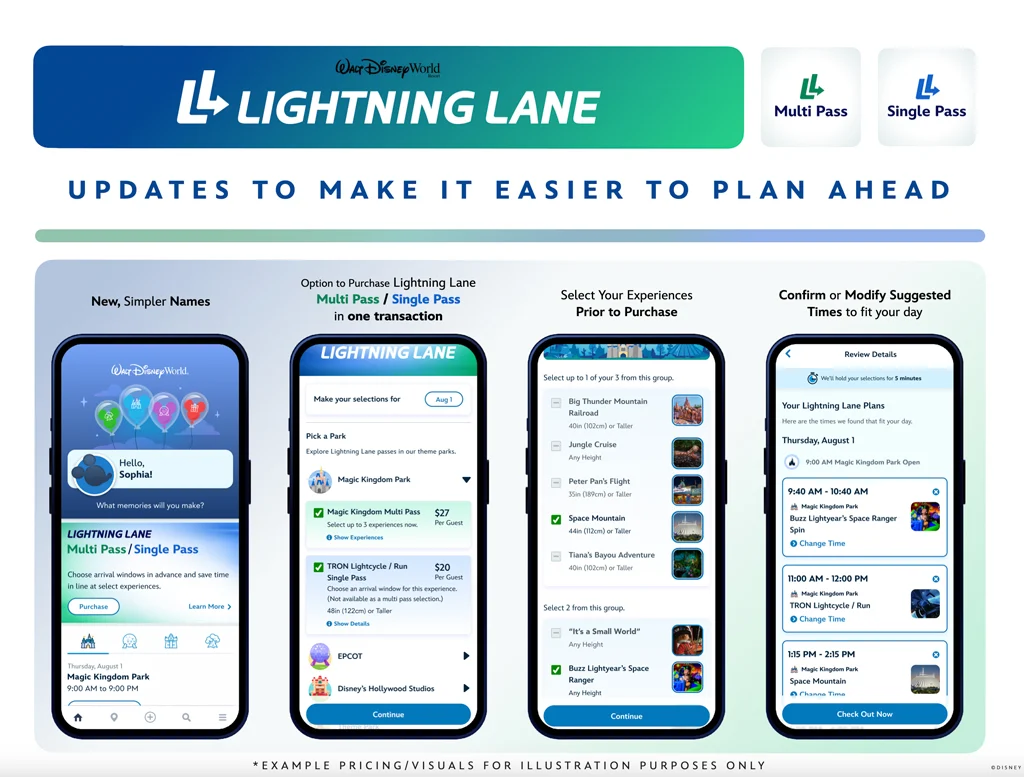
You’ll notice the order of wording there – that guests “make Lightning Lane selections, then purchase the pass.” That’s because of a very, very smart “plus” for the new Lightning Lane Pass system versus Genie+…
Instead of buying into the system “blind” and then hoping to get your money’s worth, the new Lightning Lane Pass begins with you selecting your desired Lightning Lane attractions. If, for example, you set out to buy a Lightning Lane Pass for Hollywood Studios, you’ll be presented with the available rides to select from. The system will then “optimize” your selections and assign hour-long return windows (with the option to modify by searching for other return windows). Only then – once you’ve got the rides and return times you want – do you continue to payment, which “locks in” your choices. That’s a far friendlier and more relieving process than Genie+, where you might have paid for Genie+ access only to find that no desirable rides have any Lightning Lane entries still available.
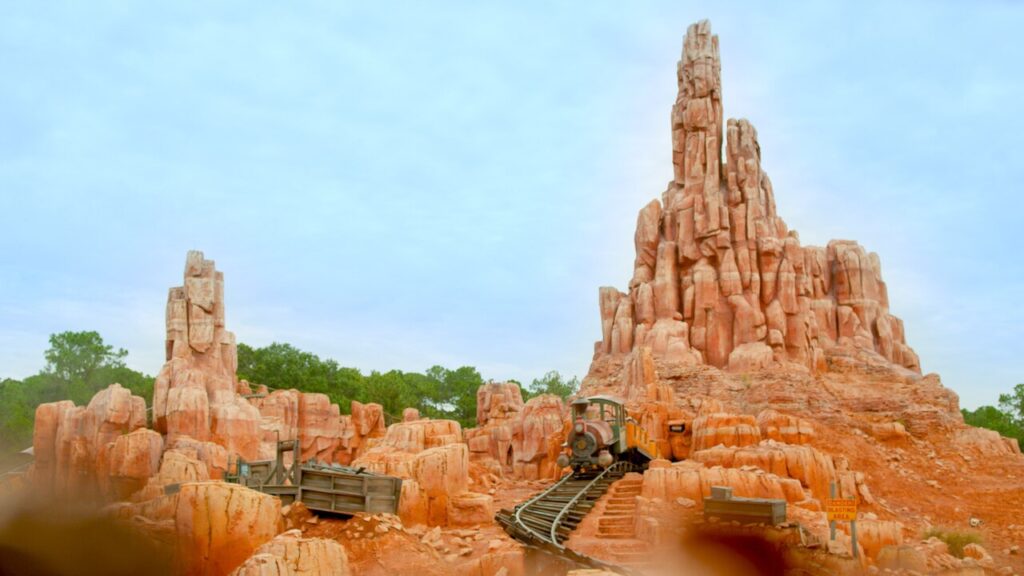
Speaking of which, just like FastPass+, the new Lightning Lane Pass has some necessary restrictions. Of the three attractions you can pre-book access to, only one can be a “Tier 1” attraction. For example, at Magic Kingdom, you can choose only one of the following “Tier 1” choices:
- Big Thunder Mountain
- Jungle Cruise
- Peter Pan’s Flight
- Space Mountain
- Tiana’s Bayou Adventure
Your other two selections must be from a lower-tier group that includes attractions like Mad Tea Party, Mickey’s Philharmagic, Pirates of the Caribbean, Haunted Mansion, and the Barnstormer. (The tiered system is in place at every Walt Disney World park except Animal Kingdom, which simply doesn’t have enough attractions to arrange into tiers.)
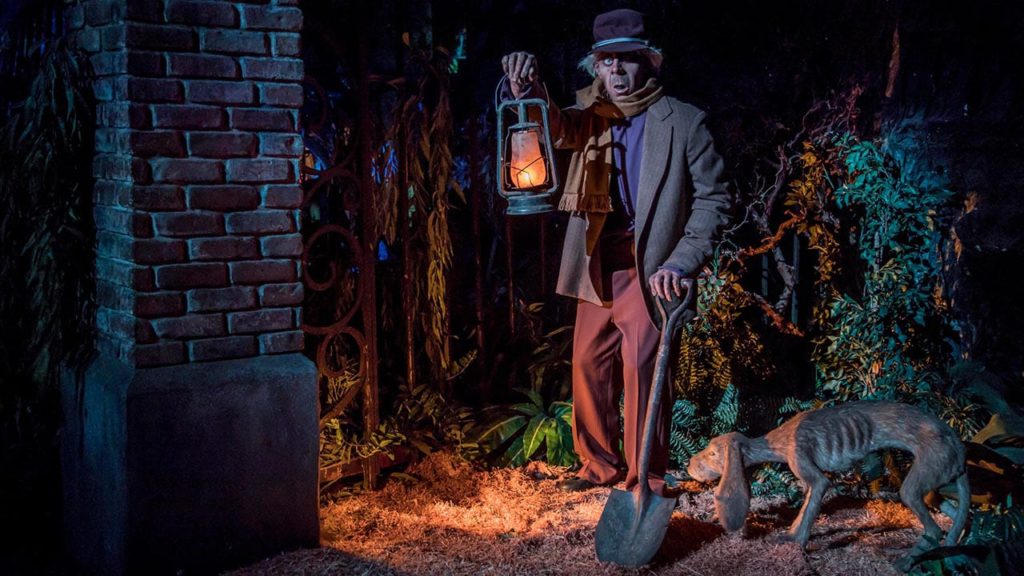
One useful divergence from FastPass+ is that instead of waiting until you have redeemed all three selections before you’re able to pick a fourth, you can always hold three Lightning Lane reservations. After you’ve used the first, you can replace it with another. (That’s a good thing for those ‘in-the-know,’ who can prioritize an early morning Tier 2 Lightning Lane, redeem it, and hope to replace it with any remaining Tier 1 selections.)
Like every evolution of Disney’s virtual queuing system since 1999, the new Lightning Lane Pass is a mixed bag – a natural product of the mixed effort to balance the parks’ limited capacity, its eternal quest for order, and growing guest demand, now made all the more complex by a corporate mandate to generate as much revenue as possible.
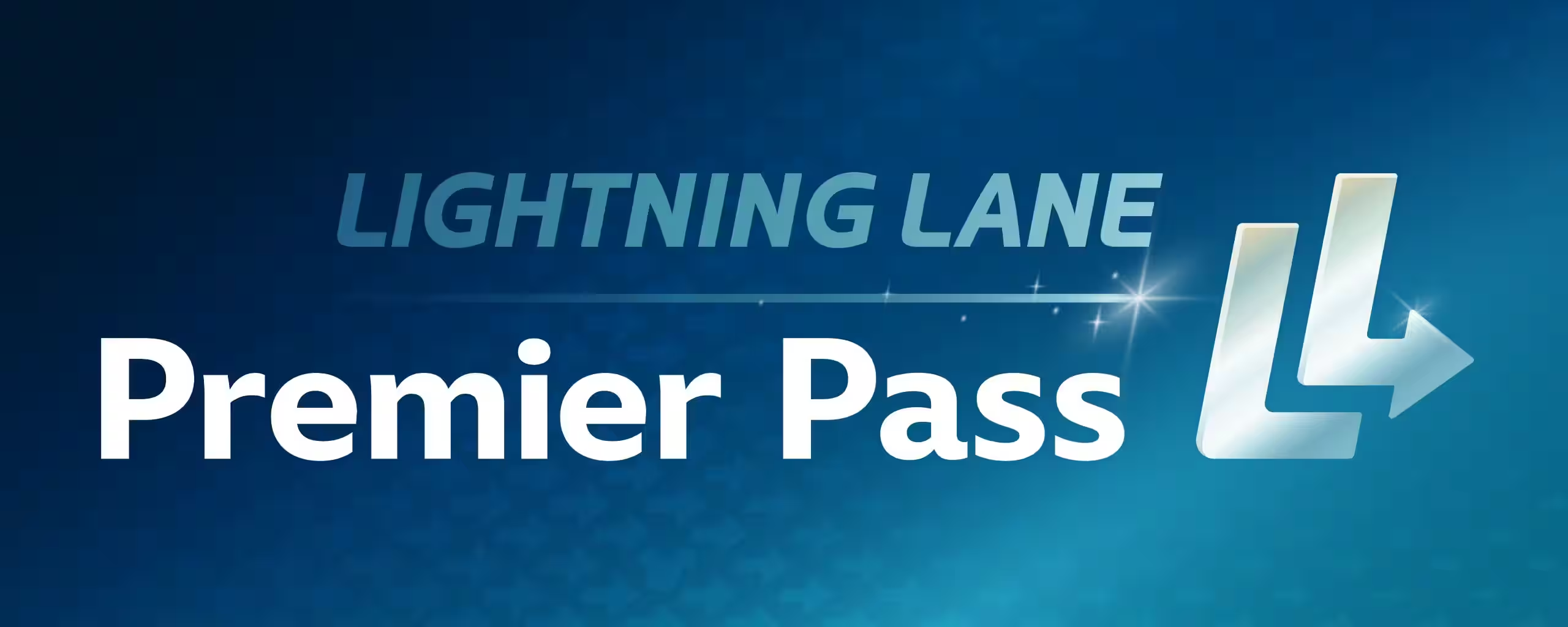
Which also begets the inevitable introduction in October 2024 (three months after the Multi and Single Pass roll-out) of Lightning Lane Premier Pass – the navy-hued, premium-priced variation that offers its purchaser one-time, anytime access to all of a park’s Lightning Lane-equipped rides (even the “Single Pass” one[s]) for an eye-watering cost of (to date) up to $499 per person per day depending upon the park and crowd level. (That, notably, blasts past even the highest prices of Universal Express Unlimited, which offers multi-park and unlimited access to nearly every ride across the resort.)
The real perk of the Premier Pass, of course, is that there’s no need to fiddle with return times, compromise with one “Tier 1” selection, or try to balance ongoing bookings efficiently and continuously through the day. Instead, Premier Pass lets the well-to-do be their own VIP tour guide, tapping into – for example – all eighteen Lightning Lane-equipped rides at Magic Kingdom at whatever time and in whatever order they please.

Sure, Lightning Lane Passes are as inherently “evil” as any line-skipping system that allows users to pay for convenience at the expense of those queuing alongside them. But compared against Genie+, it’s also a unique case study in seeing Disney try to adapt; to balance the mismatched requests for day-of spontaneity with stabilized pre-planning; to earn revenue, but with a system that’s more accessible and orderly than high-cost, high-utility systems elsewhere.
Should Disney have just raised ticket prices by $15 in 2020 and kept FastPass free and available to all? Well… yeah. None of this seems worth the generations of earned goodwill that have been shoveled into the incinerator. Indeed, it seems very much like even the 2024 swap to Lightning Lane Passes was another showing of ineptitude; a missed opportunity – again – to just bring back FastPass. But in a Walt Disney Company that no longer measures success in guest satisfaction, but in per capita revenue at its quarterly earnings calls, add-on, upcharge priority access ain’t goin’ anywhere.
Will “Lightning Lane Multi Pass” and “Lightning Lane Single Pass” be the panacea that finally sticks? Let’s be honest. Probably not. Yet another piecemeal solution that’ll take a lot of tweaking – all while its prices rise incrementally year after year – it’s unlikely this brand or process will stick. Which, of course, begs the question, What’ll be next? Ironically, the only way to find out is to wait…
The Waiting Game
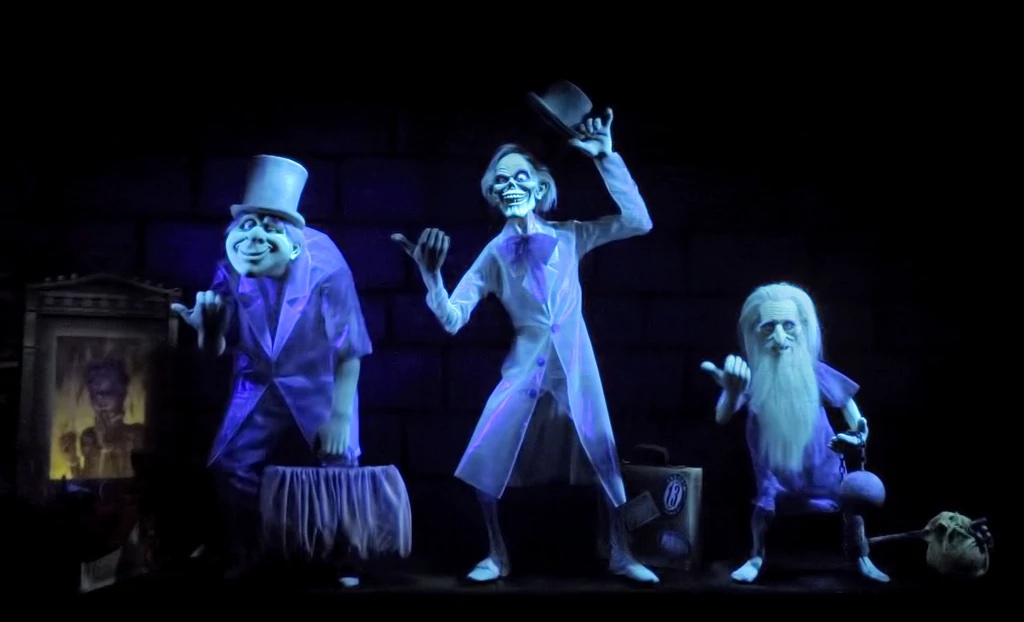
Since 1955, guests at Disney Parks have been playing “the Waiting Game.” From stanchions to environments; pre-shows to immersive queues; FastPass to MyMagic+; Premier Access to Genie+, every step along the way has been an attempt by Disney’s designers, engineers, entertainers, and executives that balance that waiting along the scales of operations, experience, and revenue.
Disney Genie, Genie+, and Lightning Lane won’t be the last attempt that plots somewhere between the three… but prioritizing per capita spending over guest satisfaction as never before, Disney’s new over-engineered, up-charge, nickel-and-dime system may read like FastPass+ on paper, but it’s a monster in its own right.
And despite it all, the truth remains that waiting is still a zero sum game. For every Lightning Lane guest granted priority boarding, a “Stand-by” guest will have to stagnate… and this time, there’s money involved, changing the dynamics of Disney World to more closely compare to Universal’s Express, SeaWorld’s Quick Queue, Six Flags’ Flash Pass, Cedar Fair’s Fast Lane, and Merlin’s Fasttrack. Ask anyone who’s been bypassed in line at those parks and they’ll tell you that “Unfair waits are longer than equitable waits.”
So does the Lightning Lane Pass fix any what ailed FastPass+ or Genie+, and at what cost? Does a guest passing by you in a “Lightning Lane” feel different than a guest passing by you via FastPass, given that money changes the perception? Will guests grumble and accept upcharge virtual queueing, or take to the Stand-by line in protest? And what’ll come next when Lightning Lane Passes inevitably makes way for the next experimental “service” balancing operations, experience, and revenue? Ironically, we’ll have to wait to find out.
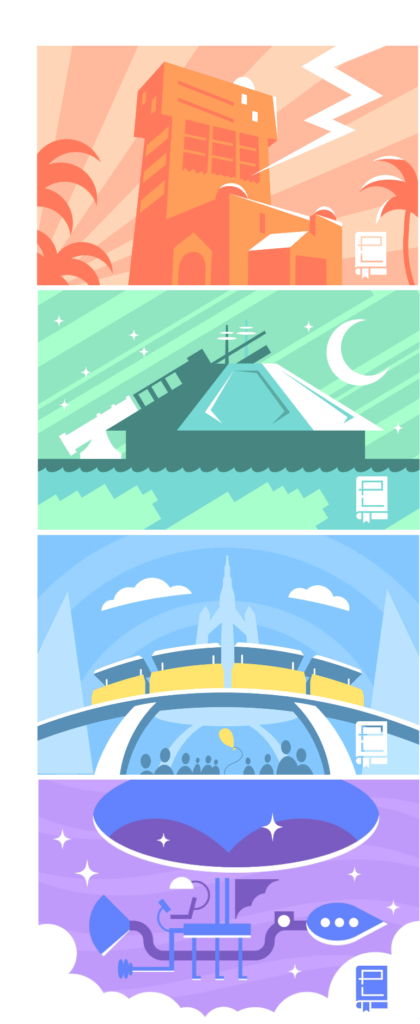
Thank you so much for reading. Now, it’s your turn to join the story. If you enjoy spending time falling down the “rabbit hole” of Park Lore’s in-depth, ad-free, member-supported stories, consider becoming a Member for as little as $2 / month.
Members can unlock rare concept art in every tale, reveal attraction audio streams in select stories, gain access to over a hundred exclusive articles in our quick-read Extra Features and in-depth Special Features collections, gain exclusive podcast extras, and receive an annual member card and merch in the mail! (Plus, y’know, supporting research-based, ad-free, clickbait-free, in-depth theme park writing!)



What really bothered me during my sole post-fastpass trip relates to this idea that “Unfair waits are longer than equitable waits.“
If a ride goes down due to weather or maintenance, when it comes back up they prioritize the Lighting Lane and drastically increase the ratio of Lightning Lane to stand-by guests.
During my trip I had not purchased Genie+, so it was horrible waiting in the excruciatingly slow stand-by after a ride name back up. When FastPass was complimentary to everyone, this same scenario didn’t bother me, as I would also benefit from the operational change when my FastPass return time came, however, in this new system, these ‘higher-tiered’ guests were prioritized making the wait feel particularly inequitable and ergo felt way longer.
My biggest takeaway from this is how short Expedition Everest’s line was in 2015. Less than 30 minutes? Sign me up! I am glad others agree about the issues with Fastpass and I now have a place to link them to on why.
I think your solution is an interesting one. I agree that fastpasses should be cut down to larger attractions but I have never heard the idea of not opening it until the standby hits a certain time quota.
I think we could see some interesting queue changes in the future here!